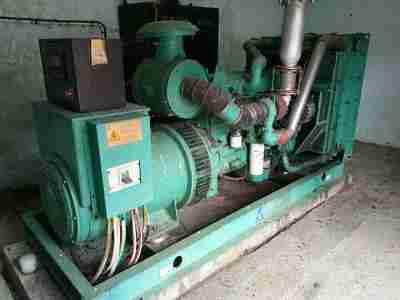What Does the Law of Conservation of Matter Show? Implications Discussed
The law of conservation of matter shows that; matter can be conserved under controlled conditions, thermodynamic differences significantly affect energy systems, matter is constant in a closed system, chemical reactions in closed systems can be accurately predicted, chemical byproducts can be evaluated using reactants and products, mass loss is accompanied by energy loss, natural systems and processes are sustainable. These and more are discussed below;
1). Matter and Hence, Resources, Can be Conserved Under Controlled Conditions
Recycling and the use of renewable fuel are two examples of how matter and resources can be conserved under controlled conditions. These practices align with the fundamental principle of the law of conservation of matter, which states that matter cannot be created or destroyed, only transformed from one form to another.
By implementing strategies that promote the reuse and regeneration of materials, we can minimize waste and preserve valuable resources for future generations.
*Recycling is a process that involves collecting, sorting, and processing waste materials to create new products. It allows us to recover valuable resources such as metals, paper, plastic, and glass, which would otherwise end up in landfills or incinerators. By recycling these materials, we reduce the need for extracting and processing virgin resources, which often requires significant amounts of energy and contributes to environmental degradation. Additionally, recycling helps to conserve water and reduce greenhouse gas emissions associated with the production of new materials.
*The use of renewable fuel is another important strategy for conserving matter and resources. Unlike fossil fuels, which are finite and non-renewable, renewable fuels are derived from sustainable sources such as biomass. These sources of energy can be replenished naturally and do not deplete the Earth’s finite resources. By transitioning to renewable fuels, we can reduce our dependence on fossil fuels, mitigate climate change, and promote a more sustainable energy future.
*In addition to recycling and the use of renewable fuel, there are numerous other ways in which matter and resources can be conserved under controlled conditions. For example, efficient manufacturing processes can minimize waste and optimize the use of raw materials. By implementing technologies that reduce material losses and improve resource efficiency, industries can significantly reduce their environmental footprint.
*Furthermore, sustainable agriculture practices can help conserve matter and resources in the food production system. Techniques such as organic farming, crop rotation, and water-efficient irrigation methods can minimize soil erosion, reduce water consumption, and promote biodiversity. These practices not only conserve valuable resources but also contribute to the long-term sustainability of our food supply.
*It is important to note that conserving matter and resources under controlled conditions requires a collective effort from individuals, businesses, and governments. Education and awareness play a crucial role in promoting sustainable practices and encouraging responsible consumption and production patterns. By making conscious choices in our daily lives, such as reducing waste, reusing materials, and supporting sustainable businesses, we can contribute to the conservation of matter and resources.
2). Differences in Thermodynamic Configurations Significantly Affect the Behavior and Performance of Energy Systems
The law of conservation of matter, as shown by the previous section, emphasizes the importance of conserving matter and resources under controlled conditions. However, it is equally important to understand how differences in thermodynamic configurations can significantly affect the behavior and performance of energy systems.
*Thermodynamics is the study of energy and its transformations. It provides a framework for understanding how energy flows and changes form within a system. In the context of energy systems, thermodynamic configurations refer to the specific arrangements and conditions of the components involved in energy conversion processes.
*One key aspect of thermodynamics is the concept of energy efficiency. Energy efficiency measures how effectively a system converts input energy into useful output energy. Differences in thermodynamic configurations can have a profound impact on energy efficiency. For example, the design and operation of a power plant can greatly influence its overall efficiency. Factors such as the type of fuel used, the combustion process, and the heat transfer mechanisms all play a role in determining the efficiency of the system.
*Another important consideration is the behavior of energy systems under different thermodynamic conditions. For instance, the behavior of a gas turbine engine will vary depending on factors such as temperature, pressure, and flow rate. These variables can affect the performance and reliability of the engine, as well as its environmental impact. By understanding the thermodynamic behavior of energy systems, engineers and scientists can optimize their design and operation to achieve desired outcomes.
*Furthermore, differences in thermodynamic configurations can also impact the sustainability of energy systems. Sustainable energy systems aim to minimize negative environmental impacts while meeting the energy needs of society. By optimizing thermodynamic configurations, it is possible to reduce greenhouse gas emissions, minimize resource depletion, and promote the use of renewable energy sources. For example, the integration of solar panels and energy storage systems in buildings can enhance energy efficiency and reduce reliance on fossil fuels.
*Generally, the behavior and performance of energy systems are significantly influenced by differences in thermodynamic configurations. Understanding these configurations is crucial for optimizing energy efficiency, improving system performance, and promoting sustainability. By considering factors such as energy conversion processes, efficiency, and environmental impact, we can design and operate energy systems that align with the principles of the law of conservation of matter and contribute to a more sustainable future.
3). Quantity of Matter in a Closed System is Constant
The previous section highlighted the importance of understanding the behavior and performance of energy systems based on differences in thermodynamic configurations. Building upon this knowledge, we can now delve into the concept that the quantity of matter in a closed system remains constant, as shown by the law of conservation of matter.
*The law of conservation of matter states that matter cannot be created or destroyed; it can only change forms or be transferred from one system to another. This principle applies to closed systems, which are isolated from their surroundings and do not exchange matter with the external environment.
*In a closed system, the total mass of the substances involved in a chemical reaction remains the same before and after the reaction. This means that the reactants and products in a closed system have the same total mass, even though their individual masses may change.
*For example, consider a closed container containing a mixture of hydrogen and oxygen gases. When a spark is introduced, a chemical reaction occurs, resulting in the formation of water vapor. Despite the transformation of the gases into water vapor, the total mass of the system remains constant. This is because the mass of the hydrogen and oxygen molecules is conserved in the reaction, and the mass of the water vapor formed is equal to the combined mass of the reactant gases.
*The law of conservation of matter has significant implications for various fields, including chemistry, physics, and environmental science. It allows scientists to predict and analyze chemical reactions in closed systems based on the masses of the reactants and products involved.
*By accurately measuring the masses of the substances before and after a reaction, scientists can determine the stoichiometry of the reaction, which refers to the quantitative relationship between the amounts of reactants and products. This information is crucial for understanding the composition and behavior of substances in closed systems.
*Furthermore, the law of conservation of matter reinforces the importance of sustainable practices. Since matter cannot be created or destroyed, it is essential to minimize waste generation and promote recycling and reuse. By adopting circular economy principles and implementing efficient resource management strategies, we can ensure the conservation of matter and reduce the environmental impact of human activities.

4). Chemical Reactions in Closed Systems can be Predicted with Accuracy Based on Reactant and Product Masses
The law of conservation of matter, as shown by the previous section, states that matter cannot be created or destroyed in a closed system. This principle has significant implications for understanding and predicting chemical reactions in closed systems based on the masses of the reactants and products involved.
*Chemical reactions occur when substances interact and undergo a transformation, resulting in the formation of new substances. In a closed system, the total mass of the reactants before the reaction is equal to the total mass of the products after the reaction. This means that the mass of the reactants is conserved and is equal to the mass of the products.
*By accurately measuring the masses of the reactants and products, scientists can determine the stoichiometry of the reaction. Stoichiometry refers to the quantitative relationship between the amounts of reactants and products in a chemical reaction. This information is crucial for understanding the composition and behavior of substances in closed systems.
*For example, let’s consider the reaction between hydrogen gas (H2) and oxygen gas (O2) to form water (H2O). According to the law of conservation of matter, the total mass of the hydrogen and oxygen gases before the reaction is equal to the total mass of the water formed after the reaction. By measuring the masses of the reactants and products, scientists can determine the stoichiometry of the reaction and establish that the ratio of hydrogen to oxygen to water is 2:1:2.
*The ability to predict chemical reactions in closed systems based on reactant and product masses is crucial for various fields of study. In chemistry, it allows scientists to design and optimize chemical processes, ensuring the efficient use of resources and minimizing waste generation. By understanding the stoichiometry of a reaction, scientists can determine the ideal amounts of reactants needed to obtain the desired products.
*In addition to chemistry, this knowledge is also valuable in other scientific disciplines. In physics, for example, it helps in understanding the behavior of substances in closed systems, such as the conservation of momentum and energy during collisions. In environmental science, it aids in analyzing the impact of chemical reactions on ecosystems and the environment.
*Furthermore, the ability to predict chemical reactions based on reactant and product masses reinforces the importance of sustainable practices. By understanding the stoichiometry of a reaction, scientists and engineers can develop processes that minimize waste generation and maximize resource efficiency. This is crucial for promoting a circular economy, where materials are reused, recycled, and repurposed to reduce the consumption of finite resources.
*Therefore, the law of conservation of matter allows for the accurate prediction of chemical reactions in closed systems based on reactant and product masses. This knowledge is essential for various scientific disciplines and has implications for resource management and sustainability. By understanding the stoichiometry of reactions, scientists can optimize processes and promote the efficient use of resources, contributing to a more sustainable future.
5). Byproducts of Chemical Reactions in Open Systems can be Identified and Analyzed Using Reactants and Products
The law of conservation of matter, as shown by the previous section, states that matter cannot be created or destroyed in a closed system. However, when it comes to open systems, where matter can enter or leave, the situation is different. In open systems, chemical reactions can result in the formation of byproducts, which are substances that are produced alongside the desired products. These byproducts can have various implications and can be identified and analyzed using the reactants and products involved in the reaction.
*In open systems, the presence of byproducts can have both positive and negative implications. On one hand, byproducts can be valuable and useful substances that can be further utilized or processed. For example, in the production of biodiesel from vegetable oil, the reaction produces glycerol as a byproduct. Glycerol can then be used in various industries, such as cosmetics and pharmaceuticals. By identifying and analyzing the byproducts, scientists and engineers can find ways to maximize their value and minimize waste.
*On the other hand, some byproducts can be harmful or undesirable substances that need to be managed or treated. For instance, in industrial processes, the production of certain chemicals can result in the release of pollutants into the environment. By understanding the reactants and products involved in the reaction, scientists can identify the byproducts and develop strategies to mitigate their negative impact. This can involve implementing pollution control measures or finding alternative reaction pathways that minimize the formation of harmful byproducts.
*The identification and analysis of byproducts in open systems rely on the same principles as those used for closed systems. By measuring the masses of the reactants and products, scientists can determine the stoichiometry of the reaction and establish the expected amounts of the desired products. Any difference between the expected product mass and the actual product mass can indicate the presence of byproducts.
*Analytical techniques such as spectroscopy, chromatography, and mass spectrometry can be employed to identify and characterize the byproducts. These techniques allow scientists to determine the chemical composition and properties of the byproducts, providing valuable insights into their nature and behavior. This information is crucial for understanding the implications of the byproducts and developing appropriate strategies for their management.
*By identifying and analyzing the byproducts of chemical reactions in open systems, scientists can make informed decisions regarding resource utilization, waste management, and environmental impact. This knowledge enables the development of more sustainable processes that minimize the generation of harmful byproducts and maximize the utilization of valuable ones.
*As this indicates, the law of conservation of matter applies not only to closed systems but also to open systems, albeit with some differences. In open systems, chemical reactions can result in the formation of byproducts, which can have both positive and negative implications. By identifying and analyzing these byproducts using the reactants and products involved in the reaction, scientists can optimize resource utilization, minimize waste generation, and mitigate environmental impact. This knowledge is crucial for promoting sustainable practices and ensuring the efficient use of resources in various industries and scientific disciplines.
6). Loss of Mass is Usually Accompanied by Loss of Energy
Loss of mass is a phenomenon that is often accompanied by a loss of energy. This relationship is observed in various systems, including nuclear reactor systems, and is supported by the law of conservation of matter. When mass is lost, energy is also lost in the process.
*In nuclear reactor systems, the loss of mass is a result of nuclear reactions. These reactions involve the conversion of atomic nuclei, which leads to a decrease in the total mass of the system. According to Einstein’s famous equation, E=mc², mass and energy are interchangeable. Therefore, when mass is lost, it is converted into energy.
*This principle is demonstrated by the law of conservation of matter, which states that matter cannot be created or destroyed in a closed system. Instead, it can only change form or be converted into other forms of matter or energy. In the case of nuclear reactions, the loss of mass is compensated by the release of energy in the form of radiation or heat.
*The loss of mass and energy in nuclear reactions has significant implications. It is the basis for the production of nuclear power, which harnesses the energy released from nuclear reactions to generate electricity. By controlling and utilizing the loss of mass and energy, nuclear power plants can provide a reliable and efficient source of electricity.
*However, it is important to note that the loss of mass and energy is not limited to nuclear reactions. It can also occur in other systems and processes. For example, in chemical reactions, the rearrangement of atoms can result in a change in mass and the release or absorption of energy.
*In exothermic reactions, where energy is released, the loss of mass is often accompanied by the release of heat or light. This is commonly observed in combustion reactions, where the burning of a fuel leads to the production of heat and light energy. On the other hand, in endothermic reactions, where energy is absorbed, the loss of mass is associated with the absorption of heat or other forms of energy.
*The relationship between the loss of mass and energy is crucial in understanding and predicting the behavior of various systems. By considering the conservation of matter and the interconversion of mass and energy, scientists and engineers can design and optimize processes to maximize energy efficiency and minimize waste.
7). Natural Systems and Processes are Sustainable
Natural systems and processes play a crucial role in maintaining the balance and sustainability of our planet. These systems encompass various cycles, such as the carbon cycle, nitrogen cycle, and water cycle, which are responsible for the movement and transformation of matter. The law of conservation of matter provides a fundamental understanding of how matter is conserved and cycled within these systems.
*Feeding, respiration, and excretion are essential processes that occur in living organisms. These processes involve the intake of nutrients, the conversion of these nutrients into energy, and the elimination of waste products. Through these processes, matter is constantly cycled from one form to another, ensuring the continuous flow of nutrients and energy within ecosystems.
*The law of conservation of matter states that matter cannot be created or destroyed; it can only change form. This principle is exemplified in the natural systems and processes that sustain life on Earth. For example, when organisms consume food, the matter contained in the food is broken down and transformed into various molecules that can be utilized for energy or growth. The waste products generated during this process, such as carbon dioxide and nitrogen compounds, are released back into the environment.
*The cycling of matter is not limited to individual organisms but also occurs on a larger scale within ecosystems and between different spheres of the Earth. For instance, the carbon cycle involves the exchange of carbon dioxide between the atmosphere, plants, animals, and the geosphere. Through photosynthesis, plants absorb carbon dioxide from the atmosphere and convert it into organic matter. This organic matter is then consumed by animals, which release carbon dioxide back into the atmosphere through respiration.
*Similarly, the water cycle ensures the continuous movement and distribution of water across the Earth’s surface. Water evaporates from oceans, lakes, and rivers, forming clouds in the atmosphere. These clouds then release precipitation, which replenishes water sources on land. This cycle sustains the availability of water for various organisms and ecosystems.
*The sustainability of natural systems and processes is crucial for the well-being of both the environment and human society. By understanding and respecting the laws of conservation of matter, we can work towards maintaining the balance and resilience of these systems. This involves adopting sustainable practices, such as reducing waste, conserving resources, and promoting the use of renewable energy sources.
*Furthermore, the conservation of matter in natural systems has implications for the management of human activities. It highlights the importance of minimizing pollution and waste generation, as these can disrupt the delicate balance of ecosystems and lead to detrimental effects on biodiversity and human health. By recognizing the interconnectedness of natural systems and our own actions, we can strive for a more sustainable future.
What Implication(s) Does the Law of Conservation of Matter have for Humans?
For humans, the law of conservation of matter implies that recycling is the most optimal use of non biodegradable wastes.
*The law of conservation of matter has significant implications for humans, particularly in the context of waste management and environmental sustainability. Improper disposal of synthetic products, such as plastics and other non-biodegradable materials, can lead to littering and pollution. These materials do not easily break down in the environment, contributing to the accumulation of waste in landfills, oceans, and other natural habitats. This not only poses a threat to wildlife and ecosystems but also affects human health and well-being.
* Recycling plays a crucial role in addressing the implications of the law of conservation of matter. It provides a means to make use of indestructible matter and reduce the amount of waste that ends up in landfills or as litter. By recycling materials such as plastics, glass, and paper, we can conserve resources, reduce energy consumption, and minimize the environmental impact of waste disposal. Recycling also helps to create a circular economy, where materials are reused and repurposed, reducing the need for virgin resources and minimizing the overall environmental footprint.
* Another implication of the law of conservation of matter for humans is the need to adopt sustainable consumption and production practices. This involves reducing waste generation at the source by choosing products with minimal packaging, opting for reusable items instead of single-use ones, and embracing a “reduce, reuse, recycle” mindset. By being mindful of our consumption habits and making conscious choices, we can contribute to the conservation of matter and the preservation of natural resources.
* The law of conservation of matter also highlights the importance of considering the life cycle of products and materials. From extraction and production to use and disposal, every stage of a product’s life cycle has implications for matter conservation. By implementing strategies such as extended producer responsibility and product stewardship, we can ensure that manufacturers take responsibility for the environmental impact of their products throughout their entire life cycle. This includes designing products for durability, recyclability, and ease of disassembly, as well as implementing take-back programs and promoting responsible disposal practices.
* Additionally, the law of conservation of matter emphasizes the interconnectedness of human activities and the environment. Our actions, such as the use of fossil fuels, deforestation, and industrial processes, can have far-reaching consequences on matter conservation and the overall health of ecosystems. By recognizing this interconnectedness, we can strive for more sustainable practices that minimize waste, reduce pollution, and promote the efficient use of resources. This includes transitioning to renewable energy sources, implementing sustainable agriculture practices, and protecting and restoring natural habitats.
*Generally, the law of conservation of matter has several implications for humans. It highlights the need for responsible waste management, the importance of recycling and sustainable consumption, and the consideration of product life cycles. By embracing these implications and taking action, we can contribute to the conservation of matter, the protection of the environment, and the well-being of both present and future generations.
FAQs
1. What Does the Law of Conservation of Matter Prove?
The law of conservation of matter proves that matter cannot be created or destroyed in a closed system. This means that the total mass of the substances involved in a chemical reaction remains constant before and after the reaction takes place. While matter can undergo physical and chemical changes, the total amount of matter in a closed system remains the same.
2. Who Propounded the Law of Conservation of Matter?
The law of conservation of matter was first proposed by Antoine Lavoisier, a French chemist, in the late 18th century. Lavoisier is often referred to as the “Father of Modern Chemistry” and his experiments and observations laid the foundation for the understanding of chemical reactions and the conservation of matter.
3. How Does the Law of Conservation of Matter Apply to Chemical Reactions?
The law of conservation of matter applies to chemical reactions by stating that the total mass of the reactants must be equal to the total mass of the products. In other words, the mass of the substances that are present at the beginning of a chemical reaction must be equal to the mass of the substances that are formed as a result of the reaction. This principle allows chemists to predict and calculate the mass of the products based on the mass of the reactants.
4. What About Matter Can Change and What Does Not Change, According to the Law?
According to the law of conservation of matter, the total mass of matter in a closed system does not change. This means that while matter can undergo physical and chemical changes, the total amount of matter remains constant.
For instance, in a chemical reaction, the atoms of the reactants rearrange to form new compounds, but the total number of atoms and their mass remains the same. However, it is important to note that the form, state, and properties of matter can change during a reaction, but the total mass remains constant.
5. What Does the Law of Conservation of Mass State?
The law of conservation of mass states that mass is neither created nor destroyed in a chemical reaction. This means that the total mass of the substances involved in a reaction remains constant. The law of conservation of mass is often used interchangeably with the law of conservation of matter, as they both refer to the same principle of mass conservation in chemical reactions.
6. How Do Living Systems Obey the Law of Conservation of Mass?
Living systems, such as organisms and ecosystems, obey the law of conservation of mass through biogeochemical cycling. In biogeochemical cycling, matter is continuously transformed and moved through various biological, geological, and chemical processes.
For example, in the carbon cycle, carbon atoms are taken up by plants through photosynthesis, transferred to animals through consumption, and returned to the environment through respiration and decomposition. This cycling of matter ensures that the total mass of carbon remains constant within the system, even though it may change forms and locations.









